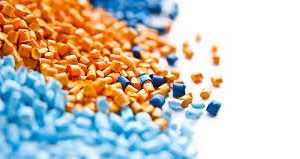Masterbatches are concentrated mixtures of pigments, additives, or other functional ingredients that are used in the plastic industry. They are typically in the form of solid pellets or granules and are added to plastics during the manufacturing process to impart specific properties or colors to the final plastic product.
There are various types of masterbatches available, each serving a specific purpose. Here are some common types:
- Color Masterbatches: These masterbatches contain high concentrations of pigments or dyes and are used to add color to plastics. They enable manufacturers to achieve consistent and uniform coloration in plastic products.
- Additive Masterbatches: Additive masterbatches contain specific additives that enhance or modify the properties of plastics. Examples of additive masterbatches include UV stabilizers, flame retardants, antistatic agents, slip agents, and antimicrobial agents. These additives can improve the performance, durability, or processing characteristics of the plastic product.
- White Masterbatches: White masterbatches are used to achieve a white or opaque appearance in plastics. They typically contain a high concentration of titanium dioxide, which provides excellent opacity and whiteness.
- Black Masterbatches: Black masterbatches contain high levels of carbon black or other black pigments. They are used to achieve a consistent black color in plastics and provide UV protection, as carbon black absorbs ultraviolet light.
- Functional Masterbatches: Functional masterbatches are specialized masterbatches designed for specific applications. They can include conductive masterbatches for static control, nucleating agents for improving crystallization, or foaming agents for lightweighting applications.
- Filler Masterbatches: Filler masterbatches contain inorganic fillers, such as calcium carbonate or talc, which are added to plastics to reduce cost, improve stiffness, or modify other mechanical properties.
Masterbatches offer several advantages in the plastic industry. They allow for precise control of color, improve production efficiency, reduce inventory management, and simplify the addition of additives during the manufacturing process.
It’s important to note that the specific composition and properties of masterbatches can vary depending on the intended application and requirements of the plastic product. Manufacturers often customize masterbatches to meet the specific needs of their customers.





There are no reviews yet.